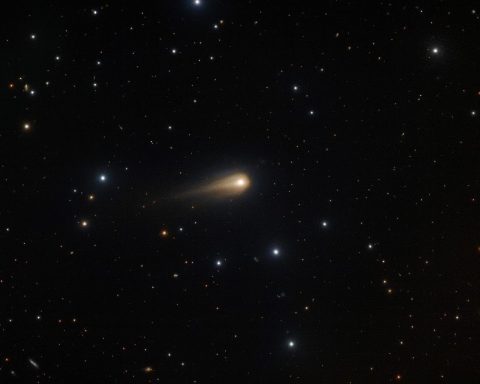- NASA’s SpaceX Crew-11 launched from Kennedy Space Center on Aug. 1, 2025 at 11:43 a.m. EDT aboard a Falcon 9 rocket, carrying Zena Cardman, Mike Fincke, Kimiya Yui, and Oleg Platonov to the International Space Station.
- Dragon Endeavour, on its record sixth flight, is set to dock at the ISS early Aug. 2 for a six‑month mission.
- NASA may extend ISS expeditions from 6 to 8 months, potentially keeping Crew-11 aboard until April 2026 if Dragon is certified for longer durations.
- NASA acting administrator Sean Duffy and Roscosmos Director General Dmitry Bakanov met at the Crew-11 launch, the first face-to-face meeting in nearly seven years.
- Boeing’s Starliner remains grounded after its 2023 abort, with astronauts unlikely to fly on it until 2026, as NASA plans an uncrewed cargo flight to validate fixes first.
- ISRO launched the NASA-ISRO Synthetic Aperture Radar (NISAR) on July 30, 2025 aboard a GSLV Mark II into a 747 km polar orbit, the first joint U.S.–India radar mission using L-band and S-band to map the globe every 12 days at about 1 cm resolution.
- China launched Pakistan Remote Sensing Satellite-1 (PRSS-1) on July 31 using a Kuaizhou-1A rocket from Xichang to bolster Pakistan’s Earth observation capabilities.
- SpaceX launched 19 Starlink satellites from Vandenberg Space Force Base on July 31, contributing to a 2025 cadence exceeding 90 launches and a Starlink fleet of roughly 8,000 satellites in orbit.
- SpaceX conducted a July 31 static fire of a Starship upper stage at Starbase, a 52‑meter vehicle with one of six Raptor engines, as prep for Flight 10 toward orbit.
- JWST studies of exoplanet WASP-17b, 1,300 light‑years away, suggest “sun dogs” formed by quartz crystals in winds around 10,000 mph, revealing exotic weather on a distant world.
Crewed Missions & ISS Updates
Crew-11 Launch to ISS: NASA’s SpaceX Crew-11 mission successfully lifted off from Kennedy Space Center on Aug. 1, carrying four astronauts – Zena Cardman and Mike Fincke (NASA), Kimiya Yui (JAXA), and Oleg Platonov (Roscosmos) – to the International Space Station [1]. The Falcon 9 rocket launched at 11:43 a.m. EDT after a one-day weather delay [2] [3]. Crew-11’s Dragon capsule Endeavour (on its record 6th flight) was set to dock early Aug. 2 for a six-month stay [4] [5]. The launch marked SpaceX’s 11th operational crew rotation for NASA, and notably filled a gap left by Boeing’s delayed Starliner program [6]. “I have no emotion but joy right now. That was absolutely transcendent – ride of a lifetime,” Commander Cardman radioed after reaching orbit [7].
- ISS Expedition Changes: Cardman and Fincke had been sidelined last year due to Starliner’s troubles and finally got their mission now [8]. They replace a crew that launched in March 2025 as Starliner “fill-ins” [9]. NASA may extend ISS expeditions from 6 to 8 months to save costs – a plan Russia already adopted – once SpaceX certifies Dragon for longer durations [10]. That means the newly arrived Crew-11 could stay until April 2026 [11]. NASA is also considering flying three-person crews (instead of four) on Dragon to further cut costs [12].
- NASA–Roscosmos Meeting: In a rare scene, NASA’s new acting administrator Sean Duffy (who is also U.S. Transportation Secretary) met with Roscosmos Director General Dmitry Bakanov at the launch – the first face-to-face between agency heads in nearly 7 years [13]. Roscosmos hailed the meeting as a milestone in cooperation, while NASA’s public channels were noticeably quiet on it [14]. Duffy emphasized the partnership’s future, saying “What we learn on these missions is what’s going to get us to the Moon and then from the Moon to Mars… There’s critical real estate on the Moon. We want to claim that real estate for ourselves and our partners” [15]. The Russian space chief’s presence (as an invited guest) signals that despite geopolitical tensions, ISS collaboration remains intact.
- Starliner Delays & ISS Future: Boeing’s Starliner capsule remains grounded after an aborted test in 2023 – now unlikely to fly astronauts until 2026 [16] [17]. NASA is leaning toward launching Starliner’s next flight uncrewed with cargo to prove fixes for its thrusters and leaks before putting people on board [18]. Meanwhile, ISS managers are planning the station’s final years: NASA and Roscosmos engineers outlined a joint deorbit strategy to safely retire the outpost by 2030 [19] [20]. A SpaceX commercial “deorbit vehicle” will be launched in 2029 to nudge the ISS into the Pacific, with Russian thrusters assisting in attitude control [21]. Astronauts would remain aboard until ~6 months before the controlled reentry in late 2030 [22]. Notably, a persistent small air leak on the ISS’s Russian Zvezda module continues despite years of patching [23], underscoring the aging station’s challenges.
International Satellite Launches & Missions
- US–India Climate Satellite (NISAR): In a major U.S.-India collaboration, ISRO launched the $1.5 billion NASA-ISRO Synthetic Aperture Radar (NISAR) Earth-observation satellite on July 30 (reported Aug. 1) [24]. A GSLV Mark II rocket lifted NISAR into a 747 km polar orbit, marking the first joint satellite mission between the two agencies [25] [26]. NISAR is the world’s first dual-frequency radar mapper, using NASA’s L-band and ISRO’s S-band radars to track subtle changes in Earth’s surface as small as 1 cm [27]. It will map the entire planet every 12 days, providing data to monitor climate change effects (like glacier retreat, ground deformation, and natural disasters) [28] [29]. “The entire globe is going to benefit from this great accomplishment,” said ISRO Chairman V. Narayanan, calling NISAR a pathbreaking mission that has brought the US and India “closer than ever before” in space cooperation [30] [31]. NASA deputy associate administrator Casey Swails hailed NISAR as a “pathfinder… [that] really shows the world what our two nations can do” together [32]. NISAR’s data will be made openly available worldwide to researchers and disaster agencies [33] [34].
- China Launches Pakistan’s Satellite: Expanding its international partnerships, China launched a remote-sensing satellite for Pakistan on July 31. A Kuaizhou-1A solid-fuel rocket lifted off at 10:00 a.m. Beijing time from Xichang, inserting the Pakistan Remote Sensing Satellite-1 (PRSS-1) into orbit [35]. Pakistan’s space agency SUPARCO declared the launch “a major milestone” that will boost the country’s Earth-observation capabilities [36]. PRSS-1’s imagery will be used for urban planning, disaster management, agricultural monitoring, climate change tracking, and environmental protection in Pakistan [37] [38]. SUPARCO noted the satellite will “revolutionise…food security…and tracking deforestation” among other applications [39]. The project was a collaboration between SUPARCO and Chinese partners (China Electronics Technology Group and Microsat), reflecting deepening China-Pakistan cooperation in space [40] [41]. Pakistani officials, including Planning Minister Ahsan Iqbal who attended the launch, lauded it as “a moment that lifts our national spirit and elevates our friendship with China” [42]. Congratulations poured in from Pakistan’s leadership – Prime Minister Shehbaz Sharif thanked China for its support, and President Asif Ali Zardari praised the nation’s scientists for the success [43] [44].
- Other Launch Activities: Even as these international missions flew, SpaceX’s Starlink deployment blitz continued unabated. On July 31, SpaceX launched 19 Starlink satellites from Vandenberg Space Force Base (Starlink 13-4 mission) – and intriguingly, some classified rideshare payloads may have hitched a ride alongside the Starlinks [45] [46]. Earlier in the week, another Falcon 9 from Florida carried 28 Starlink satellites to orbit on July 29 [47]. These launches contribute to SpaceX’s record-breaking cadence (over 90 launches in 2025 so far) and the ever-growing mega-constellation of ~8,000 Starlinks in orbit [48] [49]. (Notably, Amazon’s rival Project Kuiper also hinted at progress: the company said it invested $139.5 million in new Florida facilities to ramp up its satellite launch rate, after putting up three Kuiper satellite batches in just a few months [50].)
- Rocket Lab & Others: The small launch sector saw action too – Rocket Lab neared a new annual launch record. (By comparison, in 2024 Rocket Lab had already completed 9 Electron launches by August [51] [52]; in 2025 the company is on pace to surpass its record of 10 launches, though customer delays might temper the 22-launch goal.) Meanwhile, Blue Origin prepared to resume suborbital tourism: the company announced its next crewed New Shepard flight (NS-34) would launch on Aug. 3, taking another batch of civilian passengers to the edge of space [53]. And the U.S. Space Force confirmed plans to launch its secretive X-37B spaceplane on a new mission (OTV-8) later this month, targeting Aug. 21 on a Falcon 9 [54] – continuing the uncrewed test program that saw an X-37B set a 434-day orbital duration record earlier this year.
Commercial Space & Industry Developments
- $5 Billion Constellation Deal:EchoStar made waves by ordering the first 100 satellites of its planned $5 billion LEO constellation. The U.S. satellite operator signed a $1.3 billion contract with Canada’s MDA to build the initial batch of satellites for a direct-to-device (cellphone broadband) network [55]. This ambitious project – aiming to connect standard smartphones via satellite – comes as EchoStar faces regulatory scrutiny over its spectrum holdings. In fact, EchoStar’s disclosure acknowledged that challenges around its spectrum licenses “threaten to push [the company] into bankruptcy” even as it invests in the new fleet [56]. The MDA deal nonetheless solidifies EchoStar’s commitment to enter the satellite-phone market, an arena also being pursued by players like AST SpaceMobile and Apple.
- Earth Imaging Expansion: The Earth observation sector saw significant investments. EarthDaily Analytics, a geospatial analytics company based in Canada, secured a $60 million loan to accelerate deployment of its EarthDaily Constellation [57]. The financing (from Trinity Capital) will kickstart expansion from 1 satellite to 10 satellites, after delays in the project [58]. This constellation will deliver daily medium-resolution imagery for agriculture, environmental monitoring, and climate applications. Likewise, U.S. startup Albedo achieved a milestone – it won an NRO Stage 2 imagery contract, clearing the way for the National Reconnaissance Office to begin purchasing Albedo’s ultra-high-resolution imagery in the future [59]. Albedo is developing satellites to provide visible-light images at an unprecedented 10 cm resolution per pixel (and thermal infrared at 2 m), and it launched its first test satellite Clarity-1 in March [60]. The NRO contract validates this approach, effectively giving the U.S. intelligence community an option to buy Albedo’s imagery once the system is fully operational [61].
- Industry Earnings and Pivots: Major satellite operators are adapting to shifting markets. Luxembourg-based SES, fresh off its acquisition of Intelsat, reported that government and defense sales have surged 21% year-over-year in Q2 2025 [62]. Driven by “accelerating demand from defense customers worldwide,” SES’s government segment is now its fastest-growing, helping offset continuing declines in its traditional video (TV broadcast) business [63]. SES CEO Adel Al-Saleh said the company is leaning into network services for military and institutional clients – a clear pivot as the industry sees flat revenue in old media markets. In a similar vein, satellite manufacturers and space SPACs are navigating financial headwinds. A few space infrastructure firms (Terran Orbital, Planet, etc.) announced plans for IPOs and spinoffs, though analysts caution these could be outliers rather than a broad trend (given tepid market sentiment for space stocks) [64] [65].
- Launch Sector Notes: On the launch side, SpaceX continues dominating with rapid reusability – the Falcon 9 booster from Crew-11’s mission made its 17th flight (a notable milestone as SpaceX pushes boosters toward a 20-flight reuse goal) [66]. And in medium launch, ULA’s Vulcan rocket edges closer to debut: industry chatter suggests its long-delayed inaugural launch could happen by end of 2025 after resolving engine issues (Blue Origin’s BE-4 engines) – an important development as ULA transitions off Atlas V. Relativity Space, a startup that made headlines with a 3D-printed rocket, announced it will discontinue its small Terran 1 rocket after one test flight and fully pivot to developing the larger Terran R booster for 2026, having secured new funding to do so (this move was foreshadowed by Terran 1’s partial success in 2023). All told, the commercial space industry is showing vibrant growth but also signs of maturation, with companies re-focusing on government business and next-gen systems to achieve profitability.
Space Science & Exploration Highlights
- Starship Gears Up: SpaceX’s Starship program took a step toward its next big flight. On July 31, SpaceX conducted a static fire test of a Starship upper-stage vehicle at Starbase in Texas [67]. The prototype Starship (52 m tall) ignited one of its six Raptor engines for a few seconds, simulating an “in-space” engine burn while anchored to the pad [68]. “Starship single-engine static fire… complete on Pad 1 at Starbase,” SpaceX confirmed in a post accompanied by photos of a dramatic plume [69]. This successful test is part of preparations for Starship’s Flight 10, an upcoming attempt to reach orbit with the fully reusable, 120 m mega-rocket [70]. Notably, this will be the second integrated launch try – the first attempt (Flight 9 in April 2023) flew for ~4 minutes before losing control. For Flight 10, a new Ship is being used because the previous one exploded during a ground test on June 18 [71]. The matching Super Heavy booster for Flight 10 has already passed a full 33-engine static fire in June [72]. If all goes well, Elon Musk said Starship could launch “in about 3 weeks”, aiming to finally achieve orbit and demonstrate the ability to propel Starship on deep-space trajectories (critical for NASA’s Artemis III lunar landing and future Mars plans). The giant spacecraft is central to exploration ambitions – NASA is watching closely, as Artemis III’s schedule in 2026 hinges on a Starship lunar lander, and SpaceX ultimately envisions Starships ferrying people to Mars.
- JWST Finds ‘Sun Dogs’ on an Exoplanet: Scientists using the James Webb Space Telescope (JWST) have spotted evidence that a distant planet might have “sun dogs” – the kind of ice-crystal halos and glints we see in Earth’s skies. A new study in Astrophysical Journal Letters examined data from the hot Jupiter exoplanet WASP-17b (1,300 light-years away) and found its atmosphere likely contains tiny quartz crystals suspended in 10,000 mph winds [73] [74]. Researchers at Cornell University propose that these silicate crystals could align in the fierce winds, much like ice crystals in Earth’s atmosphere, to create halo phenomena and mock suns [75] [76]. “If we were able to take a picture of WASP-17b … we would see these types of sun dog features,” said Professor Nikole Lewis, co-author of the study [77]. This is the first time such an effect has been theorized for an exoplanet. JWST’s infrared spectra of WASP-17b hinted at high-altitude aerosols; the team’s analysis suggests they are quartz (silica) particles about as small as 1/10,000th the width of a hair [78]. Under extreme winds, these grains line up “like tiny boats drifting in formation,” explained lead author Elijah Mullens [79]. The result would be optically similar to Earth’s sun dogs – bright patches or rings of light – but on a broiling alien world with >1,500 °F temperatures. This imaginative finding showcases how JWST is revealing exotic weather on other worlds, from glassy sand rain (seen on another planet) to these potential crystal halos [80] [81].
- Extreme Double Black Hole System: Astronomers have identified what appears to be the most extreme binary black hole ever documented. The active galaxy OJ 287, about 4 billion light-years away, harbors two supermassive black holes in an tight orbital dance [82]. One black hole is truly colossal – estimated at 18 billion times the Sun’s mass – while its companion is around 150 million solar masses [83]. The smaller black hole orbits the giant on an elongated 12-year path and plunges through the larger one’s accretion disk twice per orbit, causing semi-regular brightness bursts observed from Earth [84]. New radio observations revealed OJ 287’s jet is dramatically bent or kinked [85], which is best explained by the influence of a second massive black hole tugging on the jet’s base. This “crooked jet” is compelling evidence of the binary nature of OJ 287 [86] [87]. Astronomers have tracked OJ 287’s unusual flickering for 150 years, and the binary model neatly explains a long ~60-year cycle and a shorter 12-year cycle in its light output [88]. With a mass ratio of roughly 120:1, this pair pushes extremes – the primary black hole is one of the biggest known in the universe. “Its special properties make [OJ 287] an ideal candidate for further research into merging black holes and the associated gravitational waves,” noted the study’s authors [89]. Indeed, as these giants spiral closer over millennia, they should radiate gravitational waves; OJ 287 could be a Rosetta Stone for understanding black hole mergers. The discovery underscores how far astronomy has come – using both historical records and modern telescopes to uncover an epic cosmic dance.
- Earth’s Vanishing Lake (Satellite Discovery): In Earth science news, satellites helped crack a geologic mystery in Canada. Over spring 2025, a large lake in Quebec vanished virtually overnight – draining completely in a matter of days. Residents near Lac Rouge in Quebec’s boreal region found the lake bed empty in May, with fish stranded and a road washed out [90]. Scientists turned to NASA’s Landsat 8/9 satellites, which captured before-and-after images showing the lake’s disappearance [91]. The imagery, combined with on-site surveys, revealed that the ground beneath Lac Rouge collapsed, likely due to a sinkhole or cavern, and the entire lake’s water drained into subterranean channels [92] [93]. The water flowed out through smaller streams to a river 10 km away, emptying the 0.86 mi² lake in roughly a week [94] [95]. Such rapid lake drainage is extremely rare in that area, and scientists are investigating triggers like record rainfall or previous wildfire damage that may have destabilized the lakebed [96]. The Cree First Nation, on whose land this occurred, is concerned about impacts on fish and wildlife. The dramatic event, vividly documented by orbital photos, highlights how Earth observation satellites are crucial for monitoring sudden environmental changes. (NASA notes this isn’t the only disappearing lake recently – satellites have spotted lakes draining through ice sheets in Greenland and Antarctic regions as well [97].)
Policy & Funding Developments
- NASA Budget Battle: A political storm is brewing over proposed funding cuts to NASA. The White House’s FY2026 budget request seeks to slash NASA’s budget by 24% (from $24.8 billion down to $18.8 billion) – a level not seen since 2015 [98]. In response, hundreds of NASA employees and alumni – nearly 300, including at least 4 astronauts – have signed an open letter decrying the “sweeping and indiscriminate cuts” from the new administration [99]. This letter, dubbed the “Voyager Declaration,” was addressed to Acting Administrator Sean Duffy (appointed July 7) and warns of “catastrophic consequences” if proposed layoffs and program cancellations proceed [100]. “Rapid and wasteful changes… have undermined our mission and caused catastrophic impacts on NASA’s workforce,” the letter states, accusing leadership of prioritizing “political momentum over human safety [and] scientific advancement” [101] [102]. Signatories urge NASA management to resist implementing any cuts not yet approved by Congress, emphasizing that ill-considered cuts could jeopardize everything from spaceflight safety to U.S. technological leadership.
- Congress Weighs In: Lawmakers are taking note of the unrest at NASA. On Aug. 1, a bipartisan group of U.S. Senators sent a letter to Administrator Duffy expressing deep concerns about reports that NASA headquarters was internally preparing to enforce the drastic budget reductions [103]. The senators demanded details and assurances that “no actions are taken at NASA to implement the proposed funding cuts” unless Congress actually enacts them [104]. They also inquired whether NASA has been withholding or delaying use of current FY2025 funds in anticipation of next year’s cuts [105]. This follows an earlier House inquiry and a public statement by former NASA leaders condemning the cuts. With the FY2026 appropriations process underway, many in Washington predict a showdown – NASA’s champions in Congress are warning that the nearly ¼ budget reduction would delay Artemis Moon landings, ground air safety research, and risk thousands of jobs. (Indeed, Artemis II’s crewed Moon flyby has already slipped to at least 2026 [106], and further cuts could push Artemis III’s lunar landing beyond 2028.) In late July, the Senate appropriations committee advanced a budget bill that rejects the administration’s NASA cut, seeking to restore funding closer to FY25 levels – setting the stage for fall negotiations.
- Global Space Policy Notes: Internationally, space agency leaders kept dialogues open. Alongside the Crew-11 launch meet-up, NASA and Roscosmos officials hinted at continued cooperation on the Moon: Russia’s space chief noted the two sides discussed future collaboration (even as Russia pursues its own Luna missions and a possible new station) [107]. Over in Europe, ESA quietly turned 50 years old on Aug. 1 – the agency is planning anniversary open-house events across its centers [108]. And in Asia, India’s successful space endeavors (Chandrayaan lunar landing in 2023 and now NISAR’s launch) have prompted discussions of space policy reforms to encourage more private startups in India’s space sector. The Indian government is drafting a new Space Activities Bill to regulate commercial launches and satellite services, aiming to capitalize on India’s momentum as a low-cost launch provider (ISRO’s PSLV and GSLV rockets) for international customers.
Finally, as a bit of myth-busting: NASA debunked an internet rumor that the world would experience a 6-minute global blackout on Aug. 2, 2025 due to a solar eclipse [109]. In reality, no such eclipse occurred that day – the next total solar eclipse widely visible is in 2026 [110]. NASA reassured the public that Aug. 2 would be business as usual in terms of sunlight, notwithstanding the record-breaking solar eclipse of Aug. 2, 2027 that some had apparently misconstrued [111]. This serves as a reminder that even as humanity achieves incredible feats in space, keeping factual information illuminated back here on Earth is equally important!
Sources: NASA, Roscosmos and JAXA press releases; Associated Press [112] [113]; Reuters [114] [115]; Dawn (Pakistan) [116] [117]; SpaceNews [118] [119]; Spaceflight Now [120] [121]; Space.com [122] [123]; The Guardian [124]; Senate letter via SpaceNews/FAA [125] [126].
References
1. apnews.com, 2. spaceflightnow.com, 3. spaceflightnow.com, 4. spaceflightnow.com, 5. apnews.com, 6. apnews.com, 7. apnews.com, 8. apnews.com, 9. apnews.com, 10. apnews.com, 11. apnews.com, 12. apnews.com, 13. spacenews.com, 14. spacenews.com, 15. apnews.com, 16. apnews.com, 17. apnews.com, 18. apnews.com, 19. apnews.com, 20. apnews.com, 21. apnews.com, 22. apnews.com, 23. apnews.com, 24. www.reuters.com, 25. www.reuters.com, 26. www.reuters.com, 27. www.reuters.com, 28. www.reuters.com, 29. www.reuters.com, 30. www.reuters.com, 31. www.reuters.com, 32. www.reuters.com, 33. www.reuters.com, 34. www.reuters.com, 35. www.dawn.com, 36. www.dawn.com, 37. www.dawn.com, 38. www.dawn.com, 39. www.dawn.com, 40. www.dawn.com, 41. www.dawn.com, 42. www.dawn.com, 43. www.dawn.com, 44. www.dawn.com, 45. spaceflightnow.com, 46. spaceflightnow.com, 47. spaceflightnow.com, 48. spaceflightnow.com, 49. spaceflightnow.com, 50. spaceflightnow.com, 51. spacenews.com, 52. spacenews.com, 53. www.blueorigin.com, 54. www.space.com, 55. spacenews.com, 56. spacenews.com, 57. starfightersspace.com, 58. starfightersspace.com, 59. spacenews.com, 60. spacenews.com, 61. spacenews.com, 62. spacenews.com, 63. spacenews.com, 64. spacenews.com, 65. spacenews.com, 66. spaceflightnow.com, 67. www.space.com, 68. www.space.com, 69. www.space.com, 70. www.space.com, 71. www.space.com, 72. www.space.com, 73. www.space.com, 74. www.space.com, 75. www.space.com, 76. www.space.com, 77. www.space.com, 78. www.space.com, 79. www.space.com, 80. www.space.com, 81. www.space.com, 82. www.space.com, 83. www.space.com, 84. www.space.com, 85. www.space.com, 86. www.space.com, 87. www.space.com, 88. www.space.com, 89. www.space.com, 90. www.space.com, 91. www.space.com, 92. www.space.com, 93. www.space.com, 94. www.space.com, 95. www.space.com, 96. www.space.com, 97. www.space.com, 98. time.com, 99. www.theguardian.com, 100. www.theguardian.com, 101. www.theguardian.com, 102. www.theguardian.com, 103. foushee.house.gov, 104. foushee.house.gov, 105. spacenews.com, 106. www.americaspace.com, 107. apnews.com, 108. www.esa.int, 109. www.space.com, 110. www.ndtv.com, 111. www.space.com, 112. apnews.com, 113. apnews.com, 114. www.reuters.com, 115. www.reuters.com, 116. www.dawn.com, 117. www.dawn.com, 118. spacenews.com, 119. spacenews.com, 120. spaceflightnow.com, 121. spaceflightnow.com, 122. www.space.com, 123. www.space.com, 124. www.theguardian.com, 125. foushee.house.gov, 126. time.com










